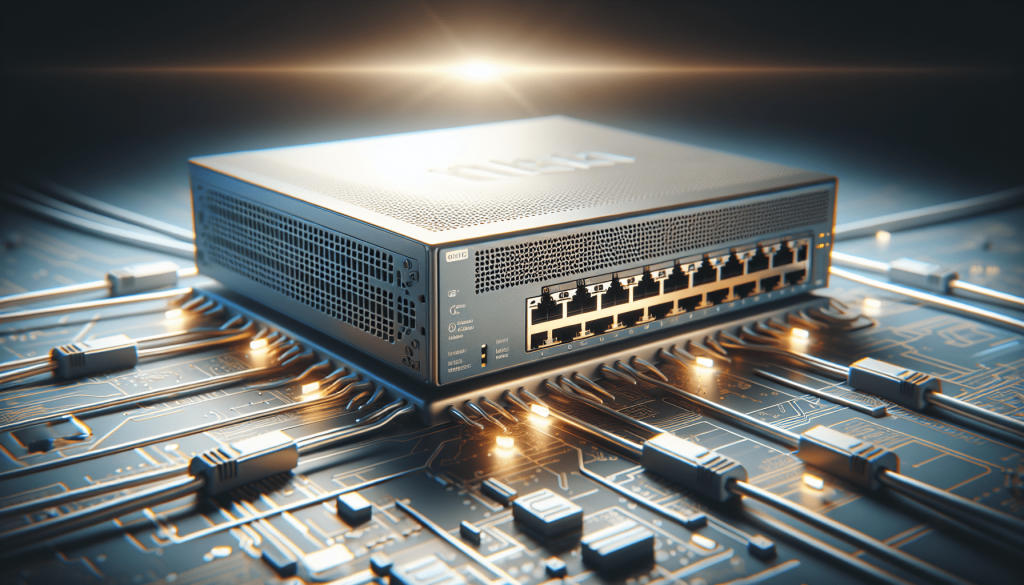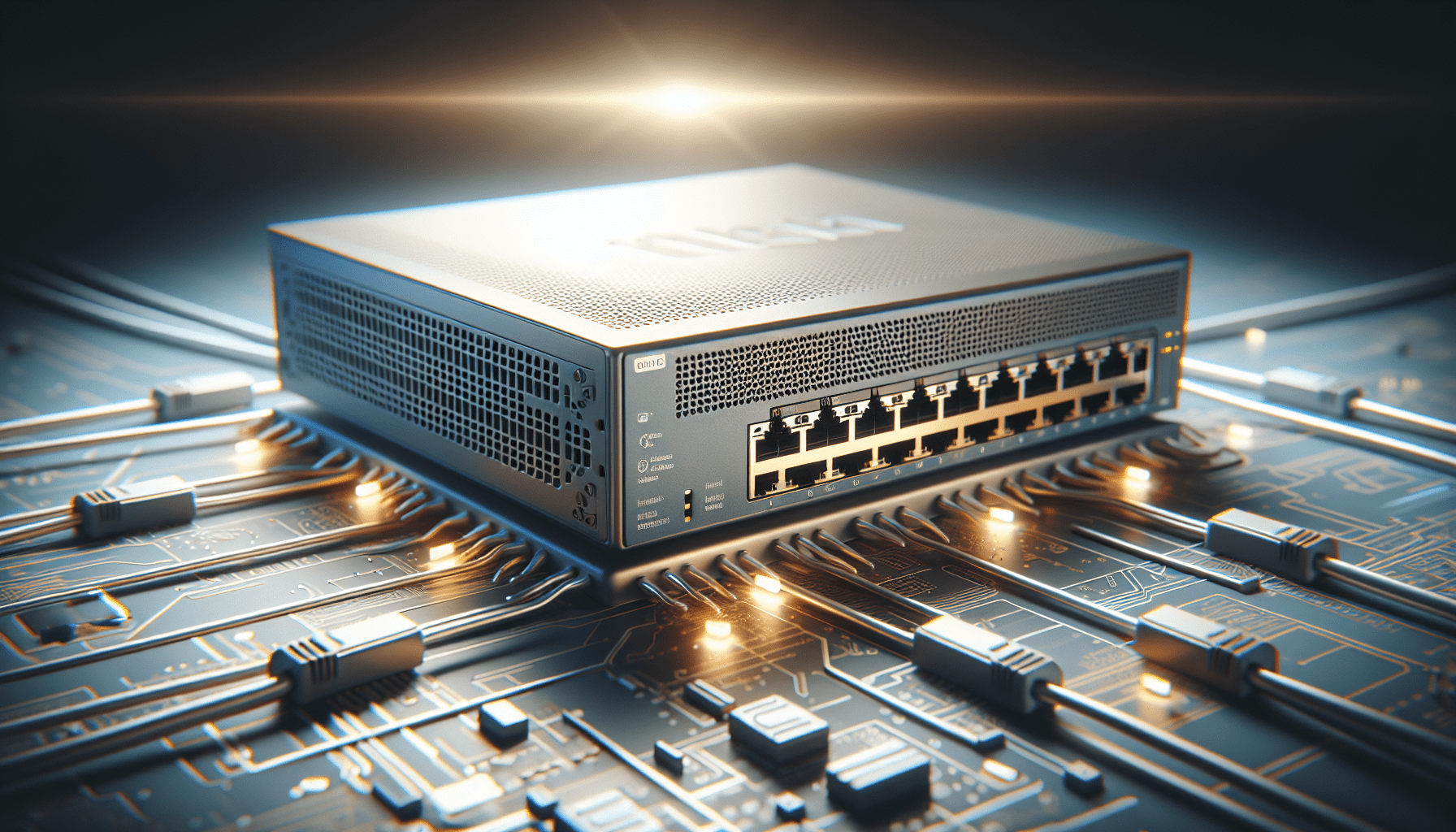If you want to make sure your network switch keeps running smoothly for years to come, look no further! In this article, we’ll share some tried-and-true tips that will help you extend the lifespan of your network switch. By following these simple suggestions, you’ll not only save time and money on repairs or replacements but also ensure a reliable and high-performing network for your business or personal use. So, let’s dive right in and discover the best ways to keep your network switch running smoothly for the long haul!

Regular Maintenance
Regularly cleaning dust and debris from your network switch is a crucial maintenance task. Over time, dust and debris can accumulate and block the airflow, causing the switch to overheat. By using a soft brush or compressed air, gently remove the dust from the switch’s vents and fans. This simple step can help prevent overheating and ensure efficient operation.
Checking and tightening connections should be done regularly to prevent any loose or damaged cables from causing connectivity issues. Inspect all the cables connected to the switch and ensure they are securely plugged in. If you notice any loose connections or damaged cables, replace them immediately. Loose connections can cause intermittent network problems and even hardware damage in the long run.
Inspecting and replacing worn-out cables is essential to maintain a reliable network connection. Over time, cables can become frayed or bent, compromising the quality of the connection. Regularly inspect all cables for signs of wear and tear, such as exposed wires or damaged connectors. If you notice any issues, replace the cables promptly to prevent network disruptions.
Proper Placement
Avoid placing your switch near heat sources as excessive heat can damage the components and shorten the lifespan of your switch. Keep it away from direct sunlight, heating vents, and other heat-emitting devices. High temperatures can cause the internal components to overheat, leading to performance issues or even complete failure.
Ensuring proper ventilation is vital for the longevity of your network switch. Make sure there is enough space around the switch for air to circulate freely. Avoid enclosing the switch in a tight space or stacking it with other equipment that obstructs airflow. Adequate ventilation helps dissipate heat and prevents the switch from overheating.
Protecting your switch from moisture and humidity is crucial. Moisture can cause corrosion and damage the internal components of the switch. Avoid placing the switch in damp areas or near water sources. If your network switch is located in a humid environment, consider using a dehumidifier to maintain optimal conditions.
Implement Power Protection
Using a reliable surge protector is essential to protect your network switch from power surges. Power surges can occur due to lightning strikes or fluctuations in the electrical grid, and they can damage the switch’s delicate electronic components. Invest in a surge protector with sufficient joule rating to absorb large surges and save your switch from potential damage.
Consider using an uninterruptible power supply (UPS) for added protection. A UPS provides backup power during outages, ensuring that your network switch stays operational even during power interruptions. It also protects the switch from sudden power loss, which can lead to data loss or hardware failures.
Protecting your switch against power fluctuations is crucial for its longevity. Voltage spikes and drops can damage the switch’s power supply and other components. To safeguard against power fluctuations, consider using a voltage regulator or a power conditioner. These devices can stabilize the incoming power supply and provide a consistent voltage level.
Manage Traffic Load
Avoid overloading your network switch as it can degrade its performance and lead to network congestion. Each switch has a maximum capacity, known as its switching capacity or forwarding rate. Make sure you do not exceed this capacity by adding too many devices or high-bandwidth applications to the network. If you anticipate heavy traffic, consider upgrading to a higher-capacity switch or adding additional switches to distribute the load.
Monitor and balance network traffic to ensure optimal performance. Use network monitoring tools to identify any bottlenecks or congestion points. By analyzing the traffic patterns, you can proactively address any potential issues and optimize the network’s performance.
Implementing virtual local area networks (VLANs) can significantly improve traffic management in your network. VLANs divide a network into multiple virtual subnetworks, allowing you to logically separate devices and control the flow of traffic. By segregating network traffic, you can prioritize critical applications and ensure that bandwidth is allocated efficiently.
Regular Firmware Updates
Stay up-to-date with the latest firmware releases for your network switch. Manufacturers frequently release firmware updates to address security vulnerabilities, improve performance, and introduce new features. Regularly check the manufacturer’s website for firmware updates specific to your switch model.
When updating the firmware, follow the proper procedure provided by the manufacturer. Typically, this involves downloading the firmware file, accessing the switch’s web-based interface, and initiating the update process. Ensure that you have a backup of the current configuration before performing any firmware updates to revert back in case of any issues.
Implement Security Measures
Enable strong access controls to protect your network switch from unauthorized access. Use unique usernames and strong passwords for all administrative accounts. Avoid using default credentials, as they are easily exploitable by malicious actors. Additionally, limit access to the switch’s management interface to authorized personnel only.
Implement a firewall and intrusion detection system to enhance your network switch’s security. Firewalls can block unauthorized access attempts and filter out potentially harmful traffic. Intrusion detection systems monitor the network for suspicious activities and send alerts when an intrusion is detected. These security measures help safeguard your network switch and prevent unauthorized access or data breaches.
Implement Redundancy
Consider implementing redundant switches to ensure continuity of your network operations. Redundant switches create a backup in case of a primary switch failure, preventing downtime and maintaining network connectivity. Connecting switches in a redundant configuration, such as using link aggregation or a network protocol like Rapid Spanning Tree Protocol (RSTP), allows automatic failover in case of a switch failure.
Enabling Spanning Tree Protocol (STP) is crucial for redundant switch configurations. STP prevents network loops by blocking redundant paths and ensures a stable and efficient network topology. It automatically detects and resolves loops, preventing broadcast storms and other network issues.
Having backup power supplies, such as batteries or generators, is essential for maintaining network availability during power outages. Backup power supplies provide a reliable power source for the switches, preventing data loss and avoiding interruptions in network connectivity.
Regular Performance Monitoring
Monitor the performance metrics of your network switch regularly. By tracking parameters such as bandwidth utilization, latency, and error rates, you can identify any performance issues and take appropriate actions. Network monitoring tools can provide real-time insights into the switch’s performance, enabling you to proactively address any bottlenecks or anomalies.
Identify and resolve performance issues promptly to keep your network running smoothly. If you notice any degradation in performance or unusual behavior, investigate the cause and take necessary actions. This may involve troubleshooting faulty cables, adjusting network configurations, or upgrading hardware components.
Implement network monitoring tools to gain better visibility into your network switch’s performance. These tools provide comprehensive insights into network traffic, usage patterns, and potential security threats. With proactive monitoring, you can ensure optimal performance, detect any abnormalities early on, and take actions to maintain a healthy network environment.
Proper Handling and Storage
Handle your network switch with care to avoid accidental damage. Avoid dropping or mishandling the switch, as it can lead to internal component damage or loose connections. When moving the switch, securely hold it from the appropriate areas to prevent any strain or stress on the components.
Store your network switch in a clean and dry environment. Avoid storing it in dusty or humid areas, as these conditions can damage the delicate electronic components and impair the switch’s performance. If you need to store the switch for an extended period, consider using anti-static bags or containers to protect it from static electricity and moisture.
When handling the switch, take precautions to prevent static discharge. Static electricity can damage sensitive electronic components. Before touching the switch, discharge any static electricity by grounding yourself or using an anti-static wristband. This simple step can help prevent accidental damage during handling.
Professional Assistance
Consult network professionals for advice on maintaining your network switch. They can provide specific recommendations based on your network requirements and assist with any complex troubleshooting. Network professionals have the expertise and experience to identify potential issues, optimize your network performance, and ensure the longevity of your network switch.
Schedule regular network audits to assess the health and performance of your network infrastructure. Network audits involve comprehensive assessments of your network, including switches, routers, cables, and security measures. By conducting regular audits, you can identify any weaknesses or vulnerabilities in your network and implement necessary improvements.
If you encounter complex troubleshooting scenarios or require specialized expertise, seek professional assistance. Network issues can sometimes be challenging to diagnose and resolve, requiring advanced knowledge and troubleshooting techniques. Professional assistance can save you time and effort, ensuring swift resolution of any network problems.
By following these top tips, you can extend the lifespan of your network switch and maintain a reliable and efficient network infrastructure. Regular maintenance, proper placement, power protection, traffic load management, firmware updates, security measures, redundancy, performance monitoring, proper handling and storage, and seeking professional assistance are essential practices to ensure the longevity and optimal performance of your network switch. Taking care of your network switch will save you from potential downtime, costly repairs, and network disruptions, enabling smooth and uninterrupted network operations.
